Prosthetic limbs have been around for centuries, helping people regain mobility and independence. Early prosthetics were simple in design, often made from wood or metal, and focused more on function than comfort. While they provided some support, they lacked the ability to mimic natural movement.
Today, technology has completely transformed the world of prosthetics. Traditional designs are being upgraded with lightweight materials, advanced sensors, and even artificial intelligence, making modern prosthetic limbs more lifelike and easier to use than ever before. These innovations have improved comfort, control, and overall user experience, allowing people with limb loss to lead more active and independent lives.
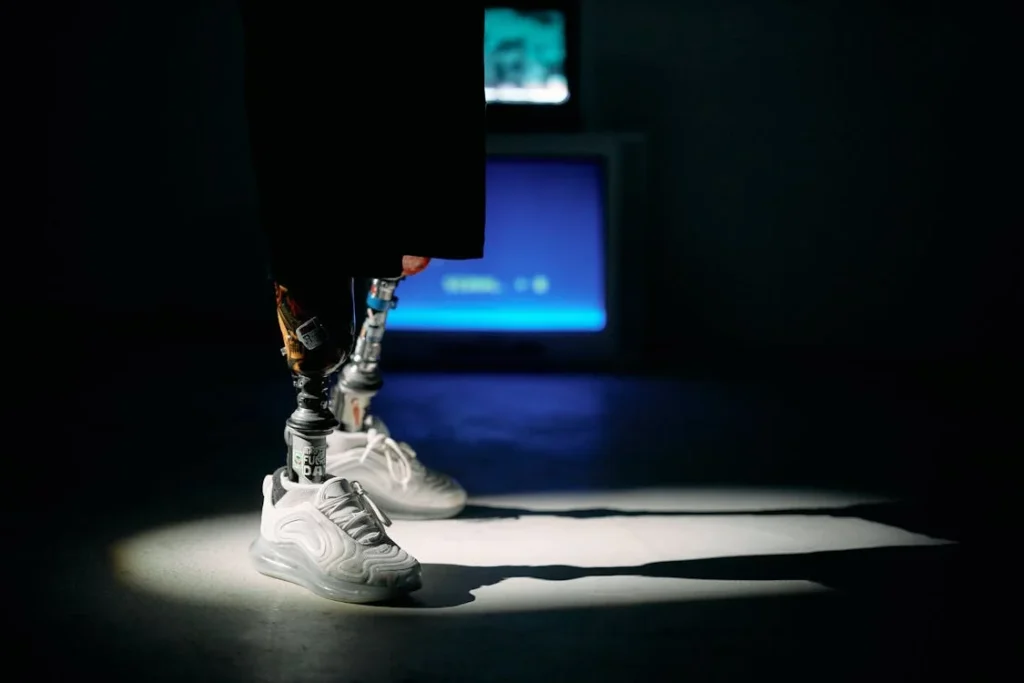
The Evolution of Prosthetic Materials
One of the biggest advancements in prosthetic technology has been the improvement in materials. In the past, traditional prosthetics were made from heavy metals, wood, or rigid plastics that were functional but often uncomfortable.
These materials lacked flexibility and placed strain on the user, making long-term wear difficult. With modern technology, prosthetic limbs are now being designed with lightweight and durable materials that improve both comfort and functionality.
The Shift to Lightweight and Stronger Materials
The introduction of carbon fiber and titanium has changed how prosthetic limbs are built. Carbon fiber is incredibly strong while remaining lightweight, making it ideal for both upper and lower limb prosthetics.
It provides the strength needed for movement while reducing the overall weight, allowing users to wear their prosthetics for longer periods without discomfort.
Titanium, on the other hand, is used in prosthetic joints and structural components because of its high durability and resistance to wear and tear. These materials extend the lifespan of prosthetic limbs, making them a more reliable option for users.
Another major improvement is the use of silicone and medical-grade plastics for prosthetic sockets. In traditional prosthetics, the socket, which connects the prosthetic limb to the residual limb, was often made from hard plastic, causing discomfort and pressure sores over time.
With modern advancements, prosthetic sockets are now made from soft, flexible materials that adapt to the shape of the user’s limb. This reduces friction and enhances comfort, allowing for a more natural and secure fit.
Smart Materials for Better Performance
Modern prosthetics are now incorporating smart materials that react to changes in movement and pressure. Shape-memory alloys and electroactive polymers are two examples of materials that can change their properties based on user activity.
These materials allow for better responsiveness and make prosthetic limbs feel more natural when walking, gripping objects, or performing other tasks.
Some prosthetic limbs also feature temperature-regulating materials that help maintain comfort throughout the day. Heat buildup inside a prosthetic socket can be a major issue, especially in warmer climates, leading to discomfort and excessive sweating.
With newer materials that help dissipate heat and improve airflow, users can experience greater comfort during extended wear.
Waterproof and More Durable Designs
Traditional prosthetics were not designed to withstand water exposure, making activities like swimming or showering difficult for users.
Modern advancements have led to the development of waterproof prosthetics that allow users to engage in water-based activities without damaging their device.
These prosthetics use sealed electronic components and corrosion-resistant materials to prevent water damage while maintaining full functionality.
Durability has also improved significantly. Traditional prosthetics were prone to wear and tear, requiring frequent repairs or replacements.
With newer materials and reinforced joints, modern prosthetic limbs are built to last longer, even under high levels of daily activity. This has reduced maintenance costs and improved the overall reliability of prosthetic devices.

Enhancing Prosthetic Functionality with Robotics and Smart Technology
Beyond material advancements, modern prosthetic limbs are becoming more intelligent and responsive thanks to robotics and smart technology.
Traditional prosthetics relied on basic mechanical designs, requiring users to manually adjust their limb positions or rely on body-powered systems.
While these designs offered basic functionality, they lacked precision, control, and the ability to adapt to different movements.
With robotics and artificial intelligence, prosthetic limbs are now more intuitive, offering users a seamless experience that closely mimics natural limb function.
The Rise of Myoelectric Prosthetics
One of the most significant innovations in prosthetics is the development of myoelectric technology. Unlike traditional prosthetics that rely on cables or harnesses, myoelectric prosthetics use electrical signals from the user’s muscles to control movement.
Sensors placed inside the prosthetic socket detect muscle contractions and translate them into specific actions, such as opening and closing a hand or bending a knee.
This advancement allows users to control their prosthetic limbs with minimal effort, making movements smoother and more natural.
Instead of manually adjusting cables or exerting force through a harness, users can simply flex their muscles, and the prosthetic will respond accordingly.
This has greatly improved the ease of use, especially for those with upper limb amputations, where fine motor control is crucial for daily tasks.
AI and Machine Learning for Smarter Control
Artificial intelligence and machine learning are transforming prosthetic control by enabling limbs to learn and adapt to a user’s specific movement patterns.
Traditional prosthetics operated with fixed movement options, limiting their versatility. Now, AI-powered prosthetics can analyze motion patterns and improve responsiveness over time, making movements more precise and personalized.
For example, modern bionic hands with AI-driven control can recognize how a user grips objects and adjust their grip strength based on the shape and texture of the item being held.
This allows for more delicate movements, such as picking up a glass of water without crushing it or holding a fragile object without dropping it. As the prosthetic gathers more data, it continuously refines its responses, making each movement feel more natural and effortless.
Advanced Sensors for Improved Feedback
Another major upgrade to traditional prosthetics is the integration of advanced sensors that provide real-time feedback to users.
Early prosthetic limbs lacked sensory feedback, meaning users had to rely solely on visual cues to gauge the position and force of their movements.
This made tasks like picking up objects or walking on uneven surfaces more challenging, as there was no direct feedback from the prosthetic.
With modern prosthetics, force sensors, pressure sensors, and even temperature sensors are being embedded into artificial limbs. These sensors allow users to “feel” how much pressure they are applying when gripping an object or detect changes in terrain when walking.
Some high-tech prosthetic hands now include touch-sensitive fingertips that provide subtle vibrations, mimicking the sensation of real touch.
This sensory feedback helps users gain better control over their prosthetic limb and improves overall confidence in their movements.
Whether it’s knowing how firmly they are holding an object or sensing environmental changes, these smart sensors bridge the gap between artificial limbs and real human experience.
Wireless Connectivity and Remote Adjustments
The latest advancements in prosthetics have also introduced wireless connectivity, allowing users to adjust their prosthetic settings through smartphone apps or remote controls.
Traditional prosthetics required in-person adjustments by a specialist, but now, users can fine-tune grip strength, movement speed, and even switch between different movement modes with the touch of a button.
This added convenience ensures that users can customize their prosthetic experience to match their daily needs. Some prosthetic devices even come with Bluetooth connectivity, allowing them to sync with external devices like fitness trackers or smart home systems.
This level of integration brings prosthetics into the modern era, making them more interactive and adaptable to different environments.
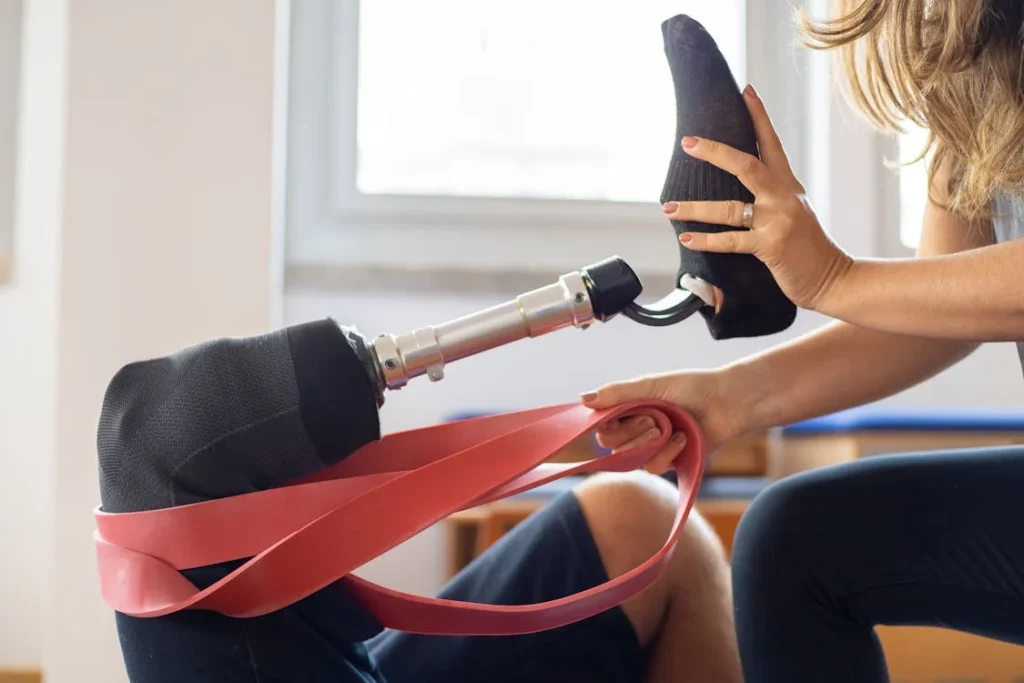
The Impact of 3D Printing on Prosthetic Advancements
One of the most groundbreaking developments in prosthetic technology is the rise of 3D printing. Traditional prosthetics were often expensive and time-consuming to produce, requiring custom molds, specialized materials, and multiple fittings.
This made prosthetic limbs inaccessible to many people, particularly in developing countries where affordability and availability were major barriers.
With 3D printing, prosthetic production has become faster, more affordable, and highly customizable, making modern prosthetics more accessible to a larger population.
Customization and Personalized Fit
One of the biggest advantages of 3D printing in prosthetics is the ability to create fully customized limbs that fit the unique shape of each user’s residual limb.
In the past, traditional prosthetics required users to undergo multiple fittings to achieve a comfortable fit. This process could take weeks or even months.
Now, with 3D scanning and printing technology, a precise digital model of the residual limb can be created in minutes, allowing for a perfectly tailored prosthetic that is both comfortable and functional.
Customization also extends beyond fit. Users can choose different colors, designs, and even patterns that reflect their personality and style.
This helps remove the stigma sometimes associated with prosthetic limbs, making them a statement of individuality rather than just a medical device.
Faster Production and Reduced Costs
Traditional prosthetic limbs require expensive manufacturing processes and skilled technicians to build and assemble each part. This results in high costs that can be a financial burden for many users.
3D printing has changed this by significantly lowering production costs while maintaining high quality.
With a 3D printer, prosthetic components can be produced in a matter of hours instead of weeks. This faster turnaround time means that users can receive their prosthetics much more quickly, reducing waiting times and improving access to necessary mobility solutions.
For children, who outgrow their prosthetic limbs frequently, 3D printing provides an especially valuable solution. Instead of having to wait for an entirely new limb to be custom-made, a new prosthetic can be printed as soon as the child needs a larger size.
This affordability ensures that children do not have to go long periods without a properly fitting limb.
Functional and Durable Designs
Early 3D-printed prosthetics were mostly experimental, but today, they are becoming just as durable as traditionally manufactured ones.
New composite materials, such as reinforced plastics and flexible polymers, allow 3D-printed prosthetics to be strong enough for daily use while remaining lightweight. Some advanced designs even incorporate 3D-printed joints and grip-enhancing textures to improve functionality.
For users who require specialized prosthetic limbs, 3D printing makes it easier to create custom designs suited to specific needs.
Athletes, for example, can have prosthetics designed specifically for their sport, such as running blades or swimming-friendly limbs. This level of specialization was once costly and difficult to achieve, but with 3D printing, it is now becoming a mainstream option.
Expanding Access to Prosthetics Worldwide
Perhaps the most important impact of 3D printing is its ability to make prosthetic limbs more widely available to underserved communities.
Many parts of the world lack access to traditional prosthetic manufacturing facilities, leaving amputees without functional limbs.
With the growth of 3D printing technology, non-profit organizations and healthcare providers can now produce prosthetics locally, reducing costs and transportation challenges.
This has led to an increase in humanitarian efforts where 3D-printed prosthetics are donated to those in need.
By eliminating the barriers of cost and manufacturing complexity, 3D printing is ensuring that more people, regardless of their financial situation, have access to the life-changing benefits of modern prosthetics.
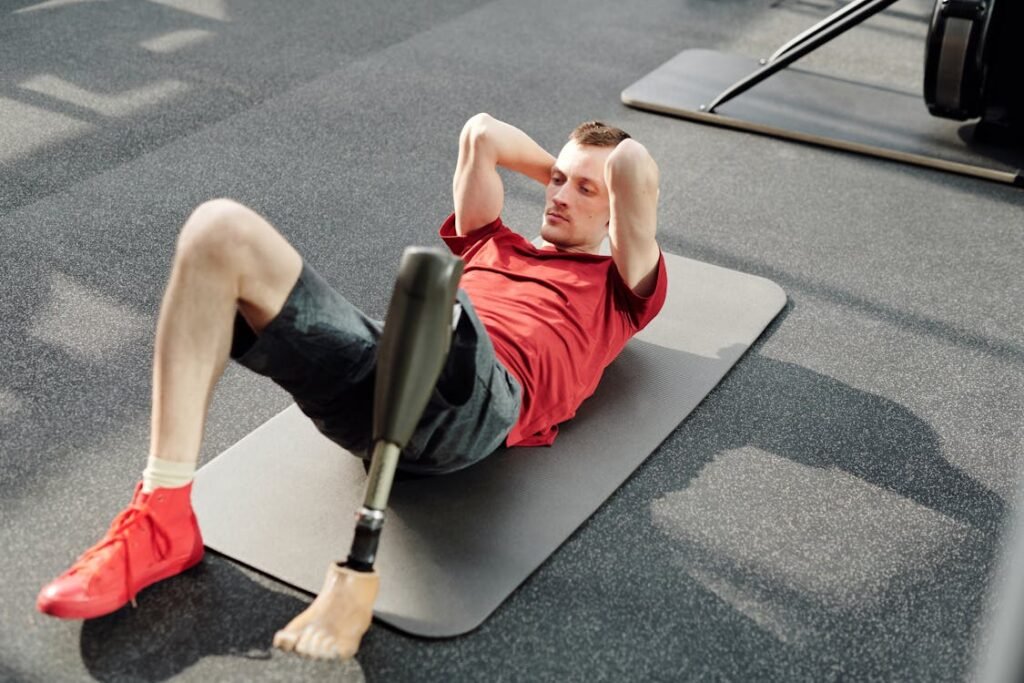
Gamified Rehabilitation: Helping Users Adapt to Modern Prosthetics
While advancements in prosthetic technology have made artificial limbs more functional and comfortable, learning to use them effectively is still a challenge.
Many users, especially first-time prosthetic wearers, struggle with coordination, muscle control, and adapting to their new limb. Traditional rehabilitation methods, such as repetitive exercises and therapy sessions, can feel tedious and discouraging.
To address this, gamified rehabilitation has emerged as a powerful tool to make prosthetic training more engaging, effective, and enjoyable.
By integrating virtual games, interactive challenges, and real-time feedback, users can develop better control over their prosthetic limb while staying motivated throughout the process.
How Gamified Rehabilitation Works
Gamified rehabilitation uses digital simulations, mobile applications, and virtual reality environments to help users practice prosthetic movements in an interactive way.
Instead of performing repetitive exercises in a clinical setting, users engage in activities like grasping virtual objects, completing coordination challenges, or navigating obstacle courses designed to mimic real-world scenarios.
For example, someone learning to use a bionic hand can practice gripping strength by playing a game where they virtually pick up and sort different objects.
A prosthetic leg user might engage in a walking challenge that encourages balance and proper weight distribution. These exercises are designed to build muscle memory and increase confidence in using the prosthetic limb naturally.
The Benefits of Gamified Therapy for Prosthetic Users
One of the biggest advantages of gamified rehabilitation is that it keeps users engaged. Traditional therapy sessions can feel repetitive and frustrating, but when exercises are turned into interactive games, users are more likely to stay committed to their training.
This increased motivation leads to faster skill development and better overall prosthetic control.
Another major benefit is real-time feedback. Many gamified rehabilitation systems include sensors that track movement and provide instant feedback on how well the user is performing a task.
This allows users to make adjustments immediately, improving their technique without waiting for feedback from a therapist. Some systems even use artificial intelligence to analyze movement patterns and suggest personalized training exercises based on a user’s progress.
Gamification also helps reduce the emotional barriers associated with prosthetic training. Many new users experience frustration, self-doubt, or anxiety when learning to use their prosthetic limb.
By making rehabilitation feel more like a game, users feel less pressure and are more likely to embrace the learning process. This positive reinforcement builds confidence and makes adapting to a prosthetic limb a more enjoyable experience.
Virtual Reality and Augmented Reality in Prosthetic Training
The integration of virtual reality (VR) and augmented reality (AR) has taken gamified rehabilitation to the next level.
VR-based prosthetic training allows users to immerse themselves in realistic environments where they can practice everyday tasks, such as opening a door, pouring a drink, or typing on a keyboard.
These virtual environments simulate real-world challenges without the fear of making mistakes, helping users build confidence before applying their skills in daily life.
Augmented reality, on the other hand, overlays digital elements onto the real world, providing on-screen guidance and interactive prompts as users move their prosthetic limb.
This technology helps users learn complex motions more easily by showing step-by-step visual cues directly in their field of vision.
Making Prosthetic Rehabilitation More Accessible
One of the most exciting aspects of gamified rehabilitation is its accessibility. Many training applications can be used from home, reducing the need for frequent visits to a rehabilitation center.
This is especially beneficial for people living in remote areas or those with limited access to specialized prosthetic care.
By combining modern technology with engaging training methods, gamified rehabilitation is revolutionizing the way people adapt to prosthetic limbs.
It is helping users develop better control, build confidence, and regain independence faster than ever before. As this field continues to grow, more prosthetic users will benefit from interactive, data-driven therapy that makes the learning process both fun and effective.
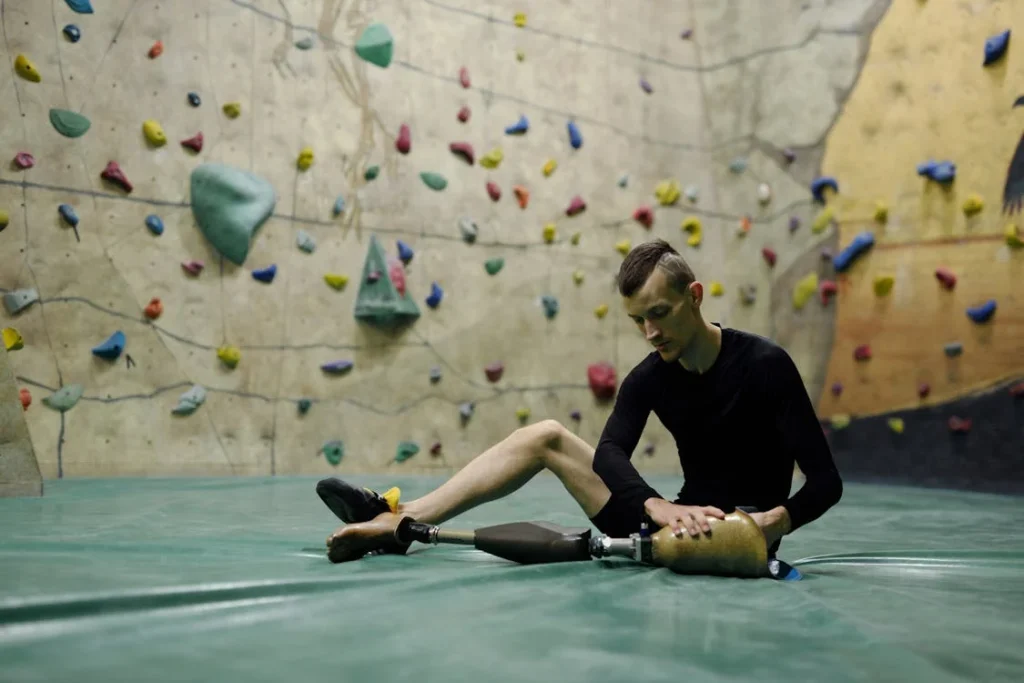
The Role of Artificial Intelligence in Personalized Prosthetic Adaptation
Artificial intelligence (AI) is playing a crucial role in transforming how prosthetic limbs function and adapt to users’ needs.
Traditional prosthetics relied on fixed mechanical movements, requiring the user to manually adjust their limb positioning and learn how to work around its limitations.
However, with AI integration, modern prosthetics can learn, adapt, and even predict user movements, making them more intuitive and easier to use.
AI-Driven Motion Prediction and Adaptive Control
One of the biggest challenges prosthetic users face is achieving fluid and natural movement. Traditional prosthetics required conscious effort for every action, making even simple tasks like picking up an object feel unnatural.
With AI-powered prosthetics, this challenge is being eliminated through motion prediction technology.
Using machine learning algorithms, modern prosthetics can analyze a user’s movement patterns and predict their intended actions before they even happen.
For example, if a user is reaching for a cup, the AI system can detect small muscle signals and automatically adjust the prosthetic’s grip strength and hand position.
Over time, the prosthetic limb “learns” the user’s preferences and habits, making movements more seamless and reducing the mental effort required to operate the device.
Adaptive control is another major breakthrough enabled by AI. With traditional prosthetics, users often had to switch between different settings manually.
AI-driven prosthetics can automatically adjust their sensitivity, strength, and movement style based on the situation. If a user is gripping a heavy object, the AI can apply more force, while for delicate objects like a piece of paper, it will reduce the grip strength accordingly.
AI-Enhanced Sensory Feedback for a More Natural Experience
One of the limitations of traditional prosthetics was the lack of sensory feedback. Users had no way of “feeling” what they were holding, making it difficult to judge grip strength or detect temperature and texture.
AI is helping bridge this gap by integrating haptic feedback and neural interfaces that provide a more lifelike sensory experience.
Some advanced AI-powered prosthetics now use electrical signals to send feedback to the user’s nervous system.
If a user applies too much pressure on an object, the prosthetic can generate a subtle vibration or a tingling sensation in the residual limb, signaling them to adjust their grip.
This technology is making it possible for prosthetic users to experience touch-like sensations, improving control and reducing accidental slips or excessive force.
Researchers are also working on AI systems that can interpret brain signals directly, allowing users to control their prosthetic limbs using thought alone.
Brain-machine interfaces (BMIs) combined with AI algorithms are making it possible for prosthetics to move in response to neural activity, just like a natural limb. While this technology is still in early development, it has the potential to revolutionize prosthetic control in the future.
AI for Prosthetic Self-Maintenance and Diagnostics
Artificial intelligence is not only improving how prosthetics function but also how they maintain themselves. Traditional prosthetic users had to regularly check for wear and tear, and servicing required in-person visits to a technician.
AI-powered prosthetics are now capable of self-diagnosing issues and alerting users when maintenance is needed.
For example, if a prosthetic joint starts to experience increased resistance, AI algorithms can detect the issue early and notify the user before it leads to a major malfunction.
Some smart prosthetics can even predict battery depletion and automatically enter power-saving mode to extend usage time. This reduces the risk of sudden failures and allows users to schedule repairs before problems arise.
Remote monitoring is another emerging feature, where AI-driven prosthetics can transmit real-time data to clinicians. This allows prosthetists to track performance, detect any fitting issues, and adjust settings remotely without requiring the user to visit a clinic.
As AI continues to improve, these self-maintenance capabilities will help make prosthetic care more efficient and hassle-free.
The Future of AI in Prosthetics
As AI technology advances, the future of prosthetics is moving toward even greater autonomy and personalization.
Future AI-powered limbs may be able to self-adjust in real time, recognize a user’s walking gait, muscle strength, and daily habits, and fine-tune their movements accordingly.
The integration of AI with cloud computing may allow users to sync their prosthetic settings across multiple devices, ensuring a consistent and personalized experience no matter where they are.
AI-driven prosthetics will continue to learn from user behavior, adapting to new movements and challenges effortlessly.
With AI taking center stage in prosthetic innovation, the dream of a fully self-learning, natural-feeling artificial limb is becoming a reality.
These advancements will not only improve functionality but also help users regain a sense of normalcy and independence, making prosthetics more than just assistive devices—they will truly feel like a part of the body.
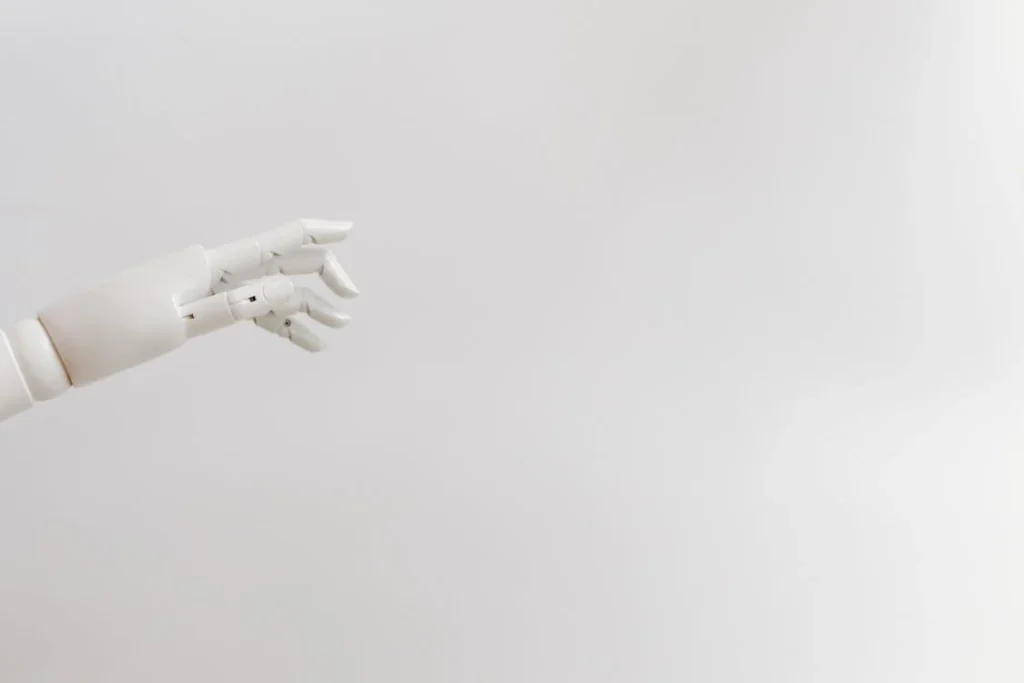
The Role of Bionic Hands and Advanced Grip Technology
One of the most revolutionary advancements in prosthetics is the development of bionic hands that offer greater precision, flexibility, and adaptability. Traditional prosthetic hands were often limited in movement, offering only basic open-and-close functions.
While they provided essential gripping ability, they lacked the fine motor skills needed for delicate tasks like holding a pen, using a smartphone, or grasping small objects.
Modern bionic hands are overcoming these limitations with multi-articulating fingers, enhanced grip patterns, and advanced motor control, allowing users to perform a much wider range of activities with ease.
These technological improvements are transforming how people with upper limb amputations interact with the world around them.
Multi-Articulating Fingers for Natural Movement
Traditional prosthetic hands often had only a single motor controlling the entire grip, meaning all fingers moved together in a uniform way.
This made it difficult to perform complex actions such as typing or picking up irregularly shaped objects. Modern bionic hands, however, are equipped with individual motors for each finger, allowing for independent movement and a more natural grasp.
This means that a user can curl one or two fingers while keeping the others extended, just like a natural hand.
Whether they need to shake hands, point at something, or grasp a round object, multi-articulating fingers allow for smoother, more intuitive movements. The improved dexterity also makes everyday tasks like buttoning a shirt, holding a credit card, or gripping a cup much easier.
Adaptive Grip Technology for Better Control
One of the biggest challenges in prosthetic hand design has been achieving the right amount of grip pressure. A traditional prosthetic hand either gripped too loosely, causing objects to slip, or applied too much force, leading to accidental crushing.
To solve this, modern bionic hands use adaptive grip technology, which automatically adjusts grip strength based on the object being held.
Sensors within the prosthetic detect resistance and pressure, allowing the hand to react in real time. For example, if a user picks up a delicate object like a glass, the prosthetic will apply just enough force to hold it without breaking it.
If they grab something heavier, like a grocery bag, the hand will automatically increase its grip strength. This smart adjustment makes bionic hands far more practical for daily use.
Pattern Recognition for Smarter Prosthetic Control
Instead of relying on mechanical switches or manual adjustments, some of the most advanced bionic hands now use pattern recognition technology to improve control.
This means that the prosthetic can recognize different muscle movement patterns and associate them with specific hand gestures or grips.
For example, if a user flexes their wrist in a certain way, the prosthetic may recognize this as a signal to switch to a pinch grip. Another muscle movement may trigger a fist grip or a power grasp.
Over time, the system learns the user’s preferred motions, making prosthetic control faster, more efficient, and almost effortless.
This technology is particularly useful for people who perform a variety of tasks throughout the day.
Whether they need to pick up a small object, hold a book, or shake hands, the pattern recognition system ensures they can switch between grips quickly and naturally without needing to adjust settings manually.
Touch and Sensory Feedback in Bionic Hands
A major limitation of traditional prosthetic hands was the lack of sensory feedback. Users had no way of “feeling” what they were touching, making it difficult to gauge grip strength, texture, or stability. This often led to dropped objects or overcompensating with excessive force.
To address this, modern bionic hands are now incorporating haptic feedback technology, which allows users to experience a sense of touch through vibrations, pressure signals, or electrical stimulation.
Some of the latest prosthetic hands have electrodes that send signals directly to the nerves in the residual limb, mimicking real touch sensations.
If a user picks up an object, they may feel a slight vibration or pulse in response, letting them know how much pressure they are applying.
This groundbreaking technology is bringing prosthetic users closer to a natural sensory experience, making bionic hands more intuitive and lifelike.
Future Possibilities for Bionic Hands
As research continues, the future of bionic hands is becoming even more exciting. Scientists are working on brain-controlled prosthetics that allow users to move their artificial hands just by thinking about it.
This involves advanced neural interfaces that connect directly to the brain, eliminating the need for muscle contractions as a control method.
Another promising development is self-healing materials, which could allow prosthetic hands to repair minor wear and tear on their own. These materials, inspired by biological healing processes, could make bionic hands more durable and long-lasting.
The combination of AI-driven motion control, real-time sensory feedback, and robotic precision is pushing bionic hands to levels of performance once thought impossible.
With each new advancement, prosthetic users are gaining more freedom, control, and confidence in their ability to perform daily tasks effortlessly.
Conclusion
The world of prosthetics has undergone a remarkable transformation, upgrading from traditional mechanical designs to advanced, technology-driven solutions. With innovations in lightweight materials, robotics, artificial intelligence, 3D printing, and sensory feedback, modern prosthetic limbs are more comfortable, functional, and intuitive than ever before. These advancements are not just improving movement but also restoring a sense of independence and confidence to users.
As technology continues to evolve, the future of prosthetics holds even greater possibilities, from brain-controlled bionic limbs to self-healing materials. With AI-driven motion prediction and real-time sensory feedback, prosthetic users are experiencing a level of control and adaptability once thought impossible.
At Robobionics, we are dedicated to bringing these cutting-edge advancements to users in India and beyond, ensuring that prosthetics are not just assistive devices but truly life-enhancing solutions. If you’re ready to experience the next generation of prosthetic technology, book a free demo of Grippy™ today and take the first step toward a more independent future!



